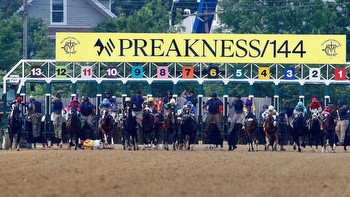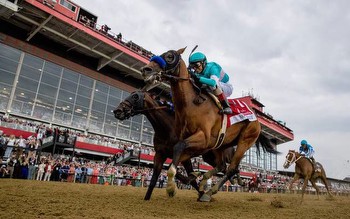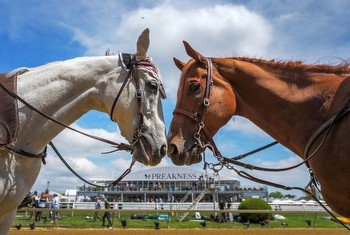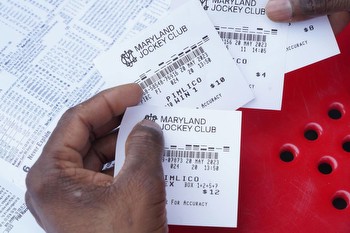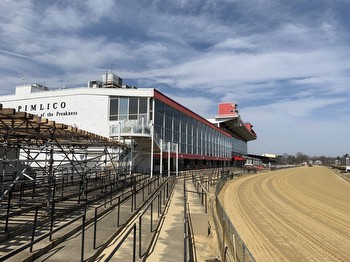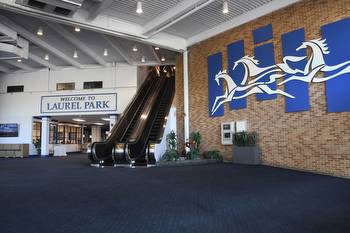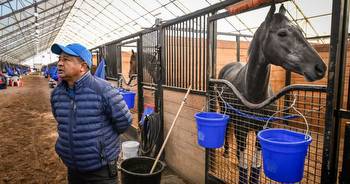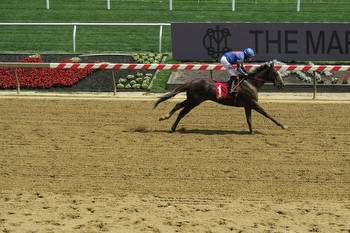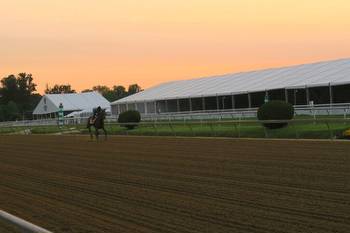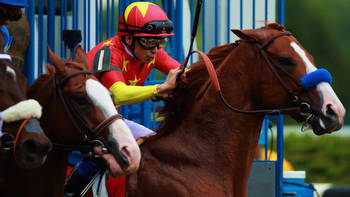Flatter: The future of Maryland racing goes beyond the sport
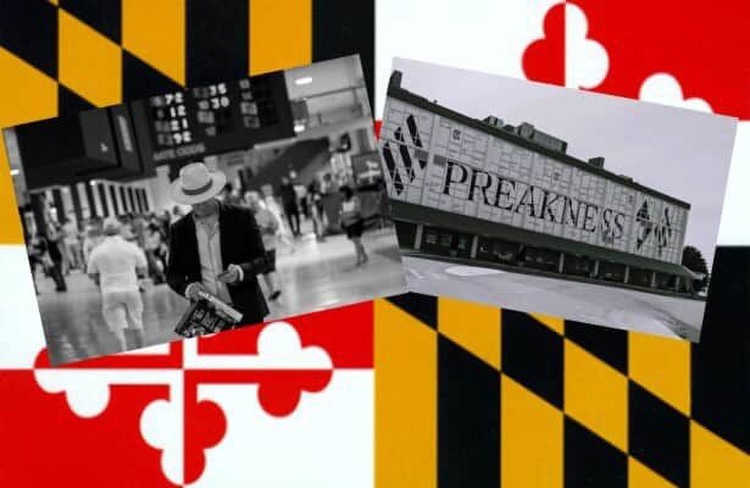
Please forgive my 17 years of experience and nearly 65 yearsof gristle that color this attempt at a long view of Maryland horse racing. Ofthe Preakness. Of Pimlico.
There is much more at stake with the latest,we-really-mean-it, this-time-for-sure, now-or-never proposal to repair thesport in a colony where it got started 279 years ago. And no, that is not coincidentallythe age of the current Pimlico grandstands.
Flashback: Maryland has new plan to rebuild Pimlico.The plan unveiled last Friday by governor Wes Moore is forthe Stronach Group to get out of the business of racing in Maryland but keepingfinancial dibs on the Preakness brand. Pimlico, which has not had a significantfacelift since the old clubhouse burned down in 1966, would be refurbished witha new training center built nearby. The Preakness would be run for at least twoyears at Laurel Park, which then would be closed and presumably put up for saleby Stronach.
This is not just about what the racing industry thinks ofthe plan. The sport long ago lost its chance to figure this out on its own.This is about whether the state legislature endorses the $375 million rewriteof a proposal that was signed into law nearly four years ago, just as we were startingto tread the COVID waters. Without General Assembly approval, the story endshere.
This is also about a Baltimore neighborhood that faces the potentiallylife-changing impact of a shiny, new Pimlico, with its promise of new racecourses,new barns, a new but much smaller grandstand, maybe even backstretch housingand, get this, a trackside hotel with plenty of underground parking.
Did I hear the word gentrification? It came and went so fastin such a high-pitched tone that I think it was heard only by spaniels andterriers.
Like I said, experience and gristle.
My first visit to the Preakness was nearly 17 years ago. I just had returned to the U.S. after living three years in Australia, where I workedfor a radio station owned by the racing industry in the state of Victoria. Backin America, I continued to file reports for RSN927 for another 12 years.
Every May, when the Preakness came up with my colleagues inMelbourne, so, too, did questions about the future of the race. I dutifullyreported in 2007 that the gossip centered on whether Frank Stronach’s Magna Entertainment,which took control of Pimlico for $117 million just five years before, wouldmove the second jewel of the Triple Crown to its newly rebuilt facility atGulfstream Park. That proved to be a canard, but at the time we did not know thatfor sure.
Then came the Magna bankruptcy, a restructuring into what graduallyhas become 1/ST Racing, the threat to move the Preakness and all of Maryland racingto a Laurel Park that would be spiffed up for a pipe dream of a Breeders’ Cup,the tens of millions of dollars Stronach spent on Laurel, the Maryland JockeyClub’s condemning of part of the grandstands at Pimlico, a lawsuit by the cityof Baltimore, a settlement that led to the state’s plan to rebuild Pimlico andLaurel, the cost overruns that coincided with COVID, the 180 done by newStronach management to mothball Laurel and focus on a rebuilt Pimlico and, lastFriday, the much-ballyhooed, new proposal to have a non-profit, state agencyrun racing and spend that $375 million in bond money to rebuild one racetrackand not two.
To paraphrase a game show from the 1980s, it’s more thanPimlico. It’s Pimlico Plus. This can be followed only by Super Pimlico,starring the late Bert Convy.
The process is pretty much the same. Only the number ofpages seems to change. In this case, 16 of them in a white paper and 81 more ina digital brochure, in full color, mind you, from the same company that builtyou Oriole Park at Camden Yards and the Ravens’ M&T Bank Stadium.
As in the past, it did not take long for skeptics to findfault with the initial spin from the governor and the freshly scrubbed bureaucrats from what has been dubbed the Maryland Thoroughbred Racetrack Operating Authority,the state’s attempt to mirror the New York Racing Association.
“Some of the critics have already come out very quicklywithout letting us continue to do our work,” said Alan Foreman, who wears a lotof hats in the racing industry. In a Thursday Zoom call with the state’s racingconstituents, he was acting in his role as the top lawyer for the MarylandThoroughbred Horsemen’s Association.
“We have a once-in-a-lifetime opportunity here,” he said, paraphrasinga line that has been uttered lot in the last 17 years.
Unwanted obstacles or not, the various factions of racing haveevery right to be heard on this, especially since the MTROA had its firstpublic meeting only five months ago.
Take the hundreds of backstretch workers who toil withupwards of 1,400 horses. They will be displaced maybe twice. Once to move toLaurel for a couple years and then again to move back to both Pimlico and theyet-to-be-determined site of the new training track.
“Obviously it will put some stress on those people,” saidTom Kelso, the former head of the Maryland Stadium Authority, which had itshands deep in the writing of the original $375 million rebuilding plan. In aninterview last Friday on WBAL radio, he said, “These are lower-wage jobs thatpeople don’t have the ability to just uproot themselves and move someplaceelse.”
Couple that with residents in Park Heights, where Pimlicohas stood for more than 153 years. It is a low-income, largely Black neighborhoodof about 30,000 people. The impact of Pimlico Plus, plus whatever ritzyadditions come with it, present concerns that even a unified racing industry cannotand should not ignore.
Perhaps most important in all this is the current state ofthe economy in the state of Maryland. When the $375 million bond issue waspassed nearly four years ago, it might have looked like a bargain to maintain Marylandracing and all the jobs it supports.
Support was not unanimous. In a September editorial, theMaryland business and legal publication The Daily Record raised concernsabout the “cost to taxpayers, declining support among the public and thequestionable future of horse racing in Maryland.”
Outside the Thoroughbred industry, those voices have gottenlouder, especially since money is tight in Maryland.
Just two days before the Pimlico Plus plan was unveiled, theeconomists and bean counters in the office of Maryland comptroller BrookeLierman put out their own glitzy, 116-page document on the state of the economyduring the past year.
In an otherwise upbeat preface, Lierman wrote, “Recentfluctuations in Maryland’s economic environment serve as flashing yellow lightsfor the state’s fiscal health.” She pointed out that the labor force is still smallerthan it was before COVID, job growth has flattened, and more residents aretaking refuge in states where it is cheaper to live.
The lack of affordable housing and child care also werementioned. These are real-life, hot-button topics that go in one ear and outthe other within the vacuum of the racing industry, no matter how much it quixoticallymight land on the same proverbial page.
In the end, the future of Maryland racing as outlined lastFriday falls to a state legislature already wrestling with what the state Boardof Revenue said would be a $761 million budget deficit in 2024-25 with allsigns pointing to $2.7 billion of red ink in five years.
When the $375 million plan to rebuild Pimlico and Laurel wassigned into law in 2020, Maryland was coming out of a fiscal year when it had asurplus. It was small, and COVID devoured it, but the state was not yet mired inthe red. Times have changed quickly.
Even though it was a Republican governor back then and a Democratnow, and even though Democrats run the legislature, the morning line says herethat it will not be a minus pool in betting on the passage of Pimlico Plus.
The state budget is due April 1. For anyone gambling on thefuture of Maryland racing, that might be when the windows close.
At least until the next time.
Ron Flatter’s column appears Friday mornings at HorseRacing Nation. Comments below are welcomed, and they may be used in thefeedback segment of the Ron Flatter Racing Pod, which also is posted everyFriday.


